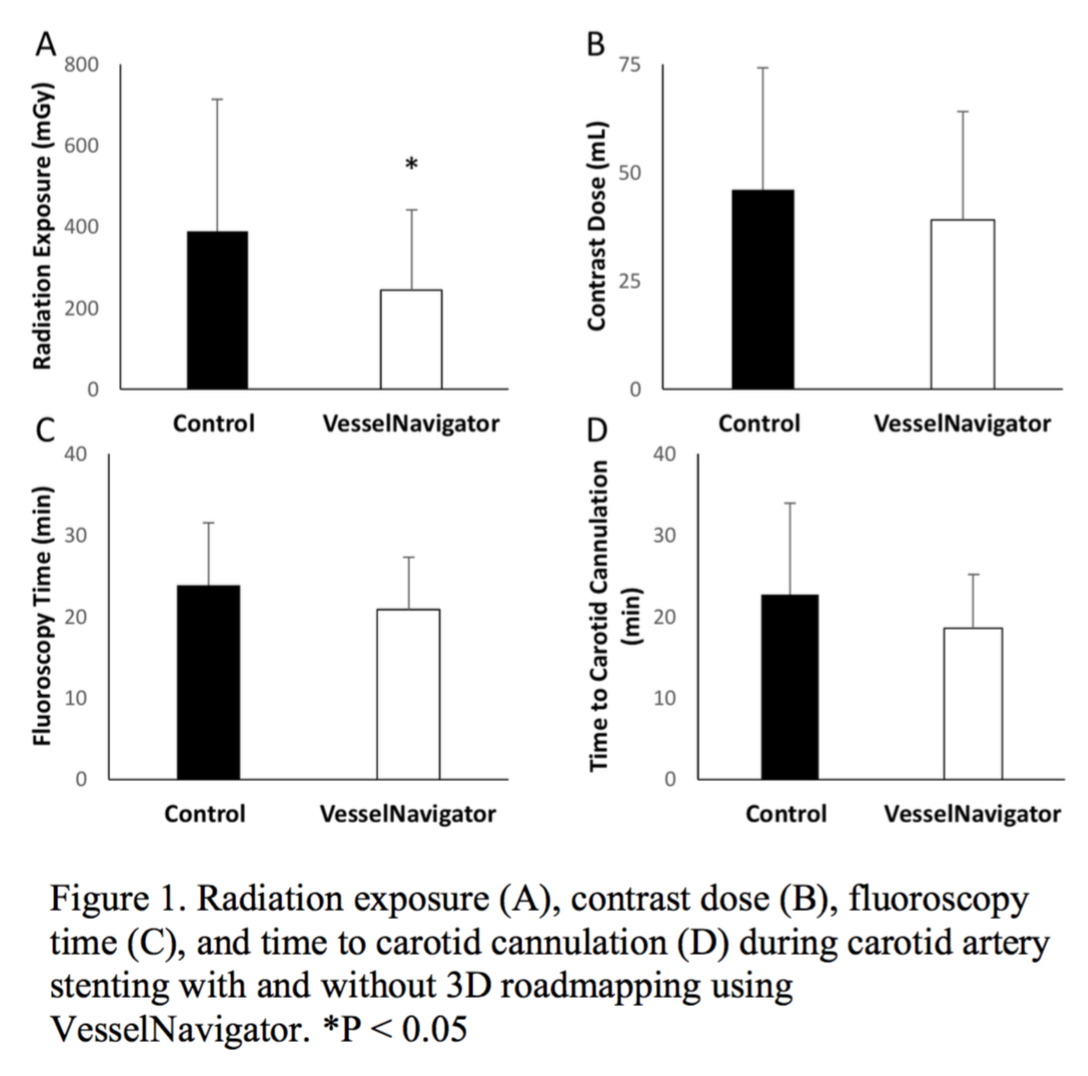Use of Novel Three-Dimensional Roadmapping is Associated with Lower Radiation Exposure during Carotid Artery Stenting
Nicholas J. Swerdlow, MD, Alexander B. Pothof, MD, Douglas W. Jones, MD, Patric Liang, MD, Thomas F.X. O'Donnell, MD, Chun Li, MD, Marc L. Schermerhorn, MD.
Beth Israel Deaconess Medical Center, Boston, MA, USA.
Objective: Carotid artery stenting (CAS) is associated with significant radiation exposure and intravenous contrast use. Live three-dimensional roadmapping using VesselNavigator technology (Philips Healthcare, Best, The Netherlands) was associated with lower radiation exposure, contrast dose, and operative time during endovascular abdominal aortic aneurysm repair. Therefore, we evaluated the impact of this 3D roadmapping technology on carotid artery stenting.
Methods: We identified consecutive CAS patients at our institution from 2009 to 2017. We used the VesselNavigator to create a 3D reconstruction of the aortic arch anatomy based on routine preoperative computed tomography (CT) or magnetic resonance angiography. We subsequently performed C-arm cone-beam CT imaging in the hybrid operating room to merge to the VesselNavigator 3D image and allow live 3D image overlay during fluoroscopy. Patients whose procedures were performed without VesselNavigator, either prior to implementation or if the VesselNavigator was not available, were used for the control group. The primary outcomes were radiation exposure and total contrast dose. Secondary outcomes included fluoroscopy time, time to common carotid cannulation, and procedure time.
Results: We identified 37 patients undergoing CAS with 3D roadmapping and 34 controls. There were no significant differences in demographic or procedural factors between the two groups. Use of 3D roadmapping was associated with 38% lower radiation exposure compared to the control group (243 vs. 389 mGy, P = .012). There was also a trend toward lower fluoroscopy time (20.9 vs 23.9 min, P = .069) and lower time to common carotid cannulation (18.6 vs 22.7 min, P = .077). Contrast dose did not differ significantly between the VesselNavigator and control groups (39.1 vs 46.0, P = .276).
Conclusions: Patients and surgeons in CAS procedures with 3D roadmapping using VesselNavigator are exposed to lower radiation doses. These results add to the growing body of evidence demonstrating the impact of 3D roadmapping on radiation exposure to both the patient and healthcare provider during complex endovascular procedures. 
Back to 2018 ePosters




